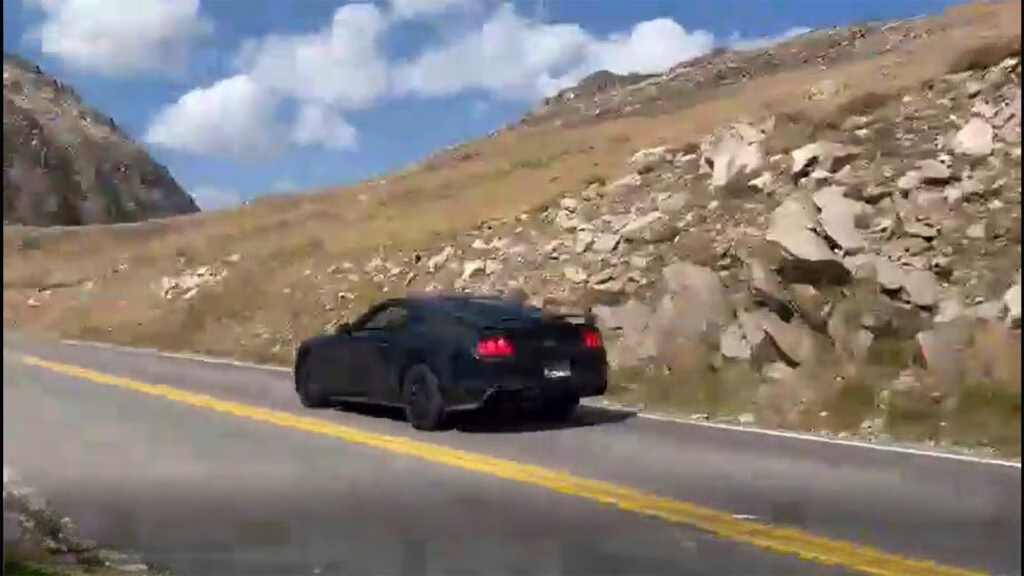What caused the Ford Mustang crash near Yellowstone on Beartooth Highway?
On August 31, a Ford Mustang driver found himself airborne—literally—after misjudging a sweeping hairpin turn on Beartooth Highway, just east of Yellowstone National Park. The incident, caught on video by a passing tourist, shows the Mustang barreling down the scenic mountain road before veering wide, striking a rock, and rolling off the pavement. There were no other vehicles involved in the crash, and the road was clear of wildlife. So what went wrong? According to the Wyoming Highway Patrol, it all boiled down to a lack of driving skill and a heavy right foot.
Beartooth Highway is famous for its breathtaking views and challenging curves. But those same twists and turns can catch even experienced drivers off guard, especially if they’re unfamiliar with mountain driving. In this case, the Mustang’s front tires simply didn’t have enough grip to handle the turn at the speed the driver was carrying. No sudden swerves, no evasive maneuvers—just too much speed and not enough respect for the road’s limits.
How dangerous are mountain roads like Beartooth Highway?
If you’ve ever driven a mountain pass, you know the stakes can be high. Beartooth Highway, which climbs to nearly 11,000 feet and features dozens of hairpin turns, is regularly listed among America’s most scenic—and most dangerous—roads. According to the Federal Highway Administration, mountain roads see a higher rate of single-vehicle crashes, often due to excessive speed, unfamiliarity with the terrain, or sudden weather changes.
Labor Day weekend, when this crash occurred, is particularly risky. The National Safety Council reports that holiday weekends see a spike in road accidents, with rural and mountainous routes posing unique hazards: limited guardrails, unpredictable weather, and long stretches without cell service or quick emergency response. The Mustang driver was lucky—he was airlifted to Billings, treated, and released the same night with no serious injuries. Many aren’t so fortunate.
What can drivers learn from this Mustang rollover?
The Mustang crash is a textbook example of why mountain driving demands a different mindset. Here’s what stands out:
1. Speed control is everything. Even powerful cars like the Mustang can’t defy physics. Entering a turn too fast, especially on unfamiliar roads, is a recipe for disaster.
2. Road scanning matters. Mountain highways can hide hazards—rocks, wildlife, or sudden drop-offs. Scanning ahead and adjusting early can make all the difference.
3. Respect local advice. The Wyoming Highway Patrol’s reminder to slow down and make smart decisions isn’t just a catchphrase. It’s backed by years of responding to similar incidents.
Anecdotally, locals will tell you that out-of-state drivers are often the ones who get into trouble on Beartooth. It’s not about bravado—it’s about understanding that what works on flat highways doesn’t translate to mountain switchbacks.
Why do high-performance cars like the Mustang get into trouble on twisty roads?
There’s a reason you see so many viral videos of sports cars getting into trouble on mountain roads. High horsepower can be intoxicating, but it’s not a substitute for grip or driving finesse. Modern Mustangs, for example, come with sophisticated traction and stability controls, but those systems can’t overcome basic laws of motion.
A 2023 study by the Insurance Institute for Highway Safety found that sports cars are overrepresented in single-vehicle crashes on rural and mountainous roads. The reasons? Overconfidence, unfamiliarity with the car’s limits, and sometimes, a simple lack of experience with rear-wheel-drive dynamics.
What role did emergency services play in this incident?
The response to the Mustang crash was swift and coordinated. Wyoming Highway Patrol, Park County Sheriff’s Office, Montana Highway Patrol, Park County Fire, and a local towing service all played a part. The driver was airlifted to Billings—a reminder that in remote areas, getting help quickly often requires air support.
This kind of multi-agency response is standard for serious incidents in rural Wyoming and Montana. It’s also a good reason to drive conservatively in areas where medical help might be hours away by road. According to the National EMS Information System, rural crashes have a 60% higher fatality rate than urban ones, largely because of longer response times.
How can you stay safe on scenic but risky highways?
If you’re planning a drive on roads like Beartooth Highway, a few simple habits can make all the difference:
– Slow down before the turns, not during them. Braking in a corner is a common cause of loss of control.
– Use lower gears to help control speed on descents—don’t ride the brakes.
– Give yourself extra space and time. The scenery isn’t going anywhere.
– Watch for changing weather. Mountain storms can roll in fast, turning dry pavement slick in minutes.
– Don’t overestimate your car—or your own skill. Even seasoned drivers can get caught out by an unfamiliar road.
The big takeaway? Surviving mountain roads isn’t about perfection—it’s about smarter adjustments. Start with one change this week—maybe easing off the gas on those curves—and you’ll likely spot the difference by month’s end.

